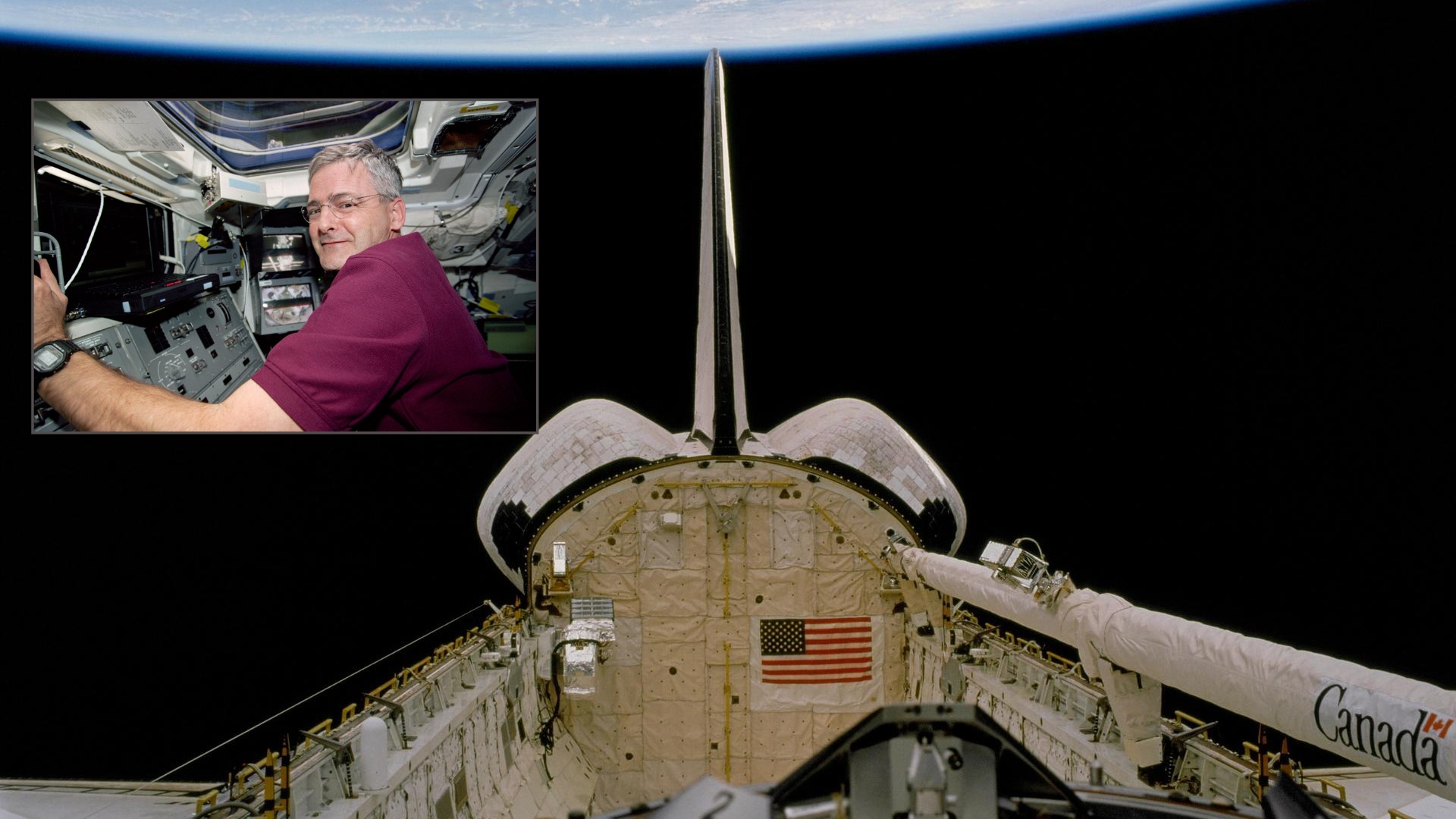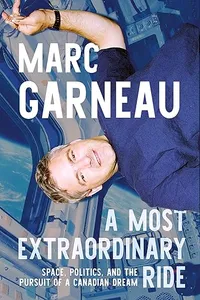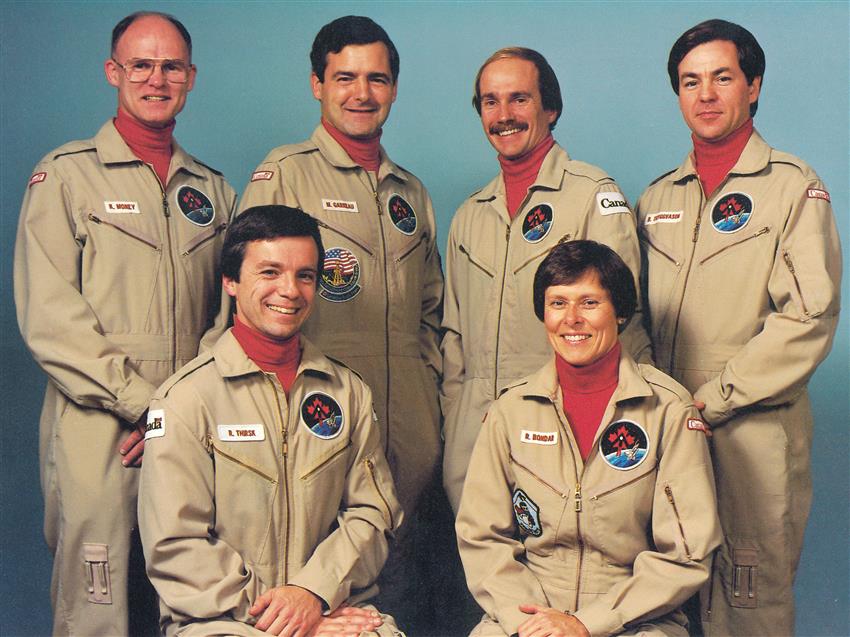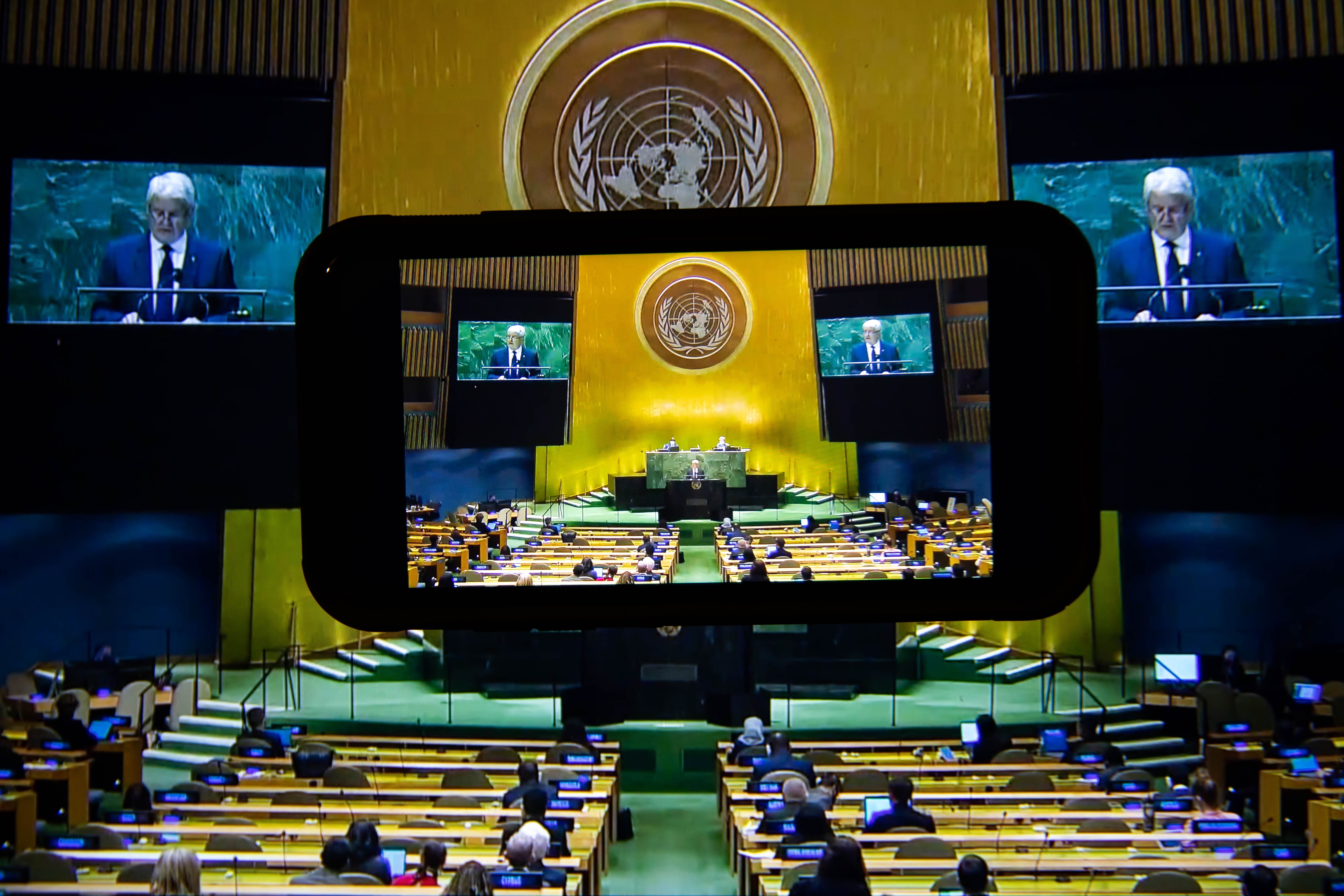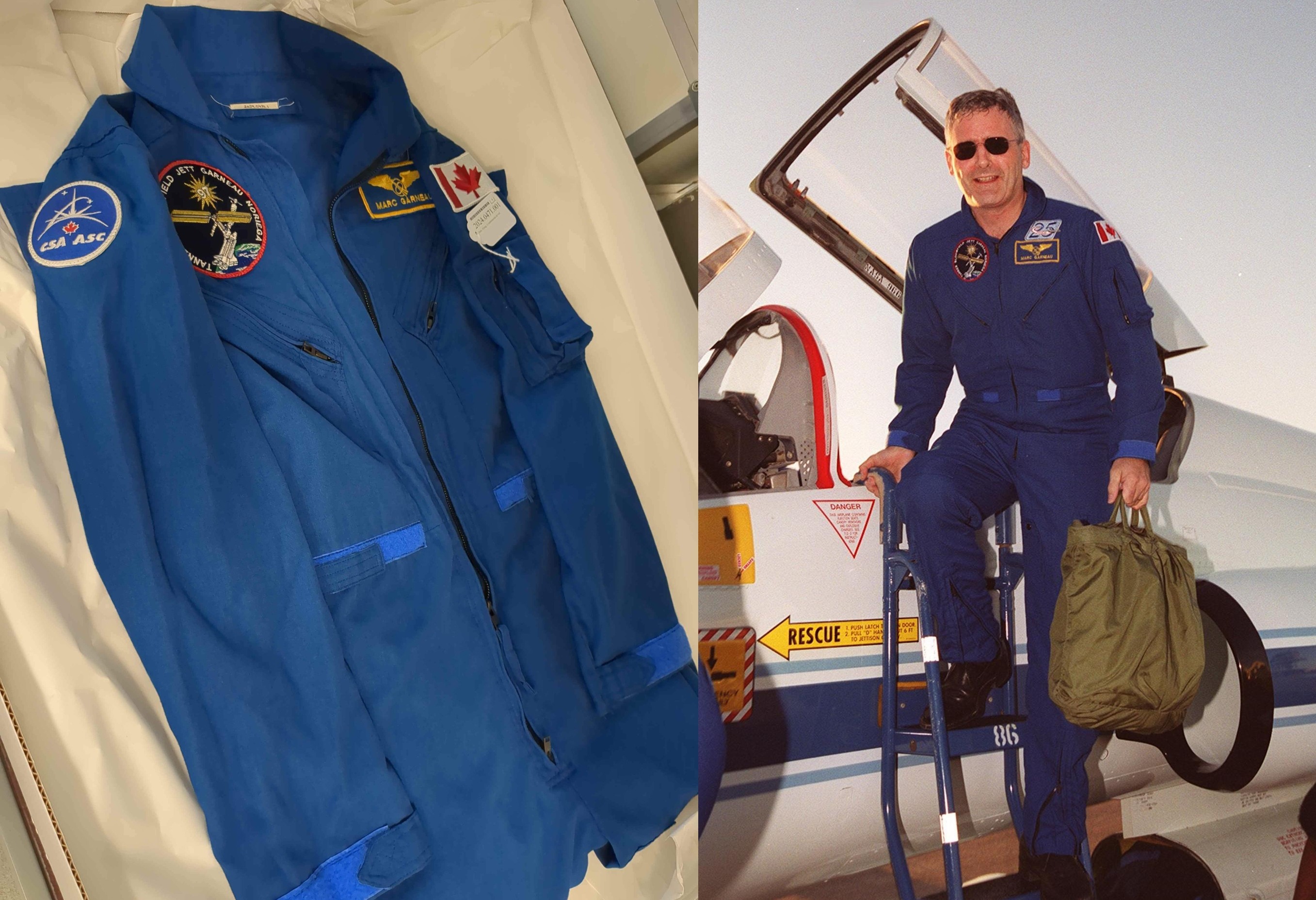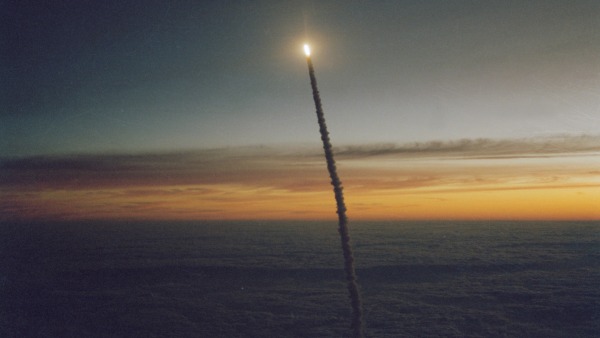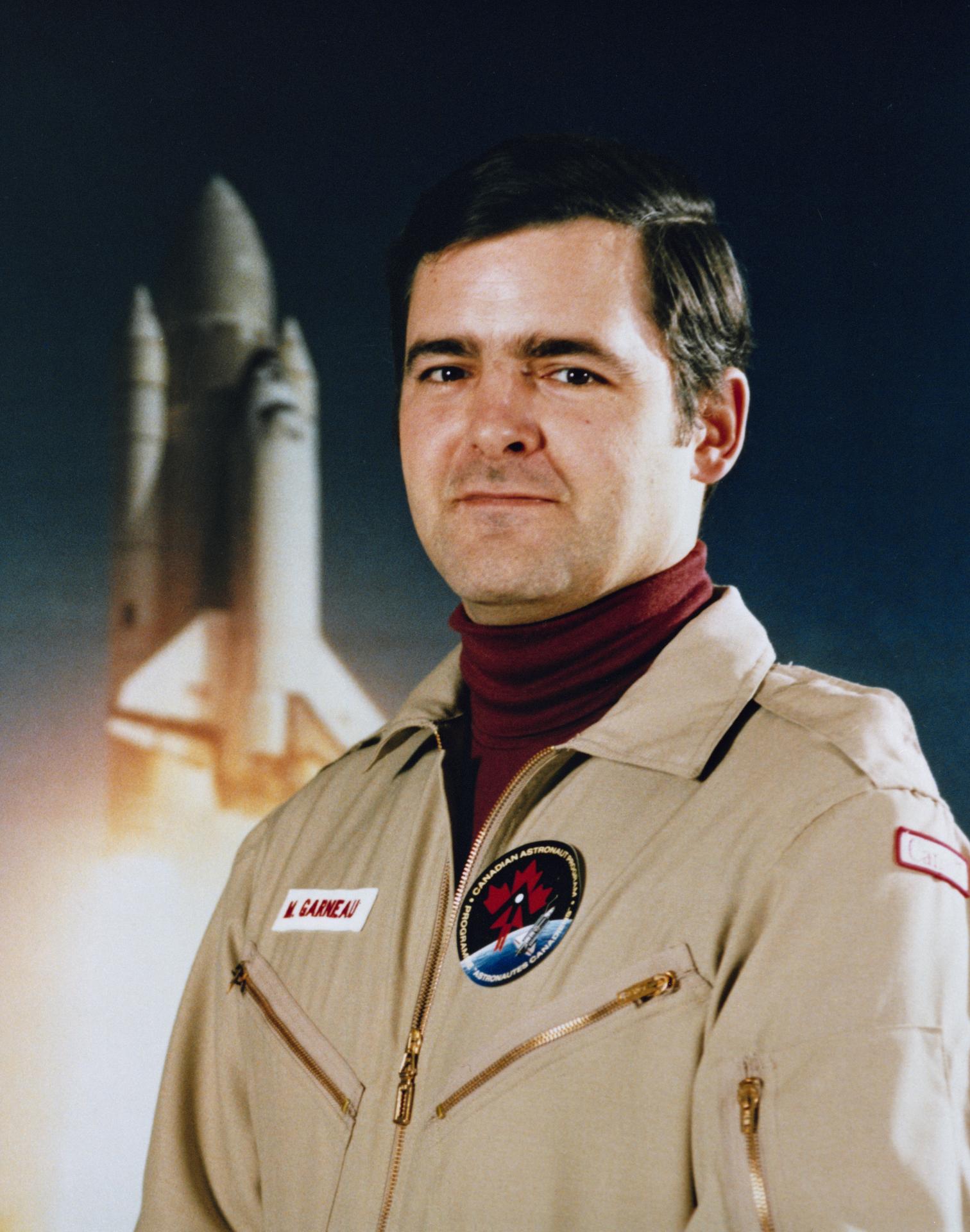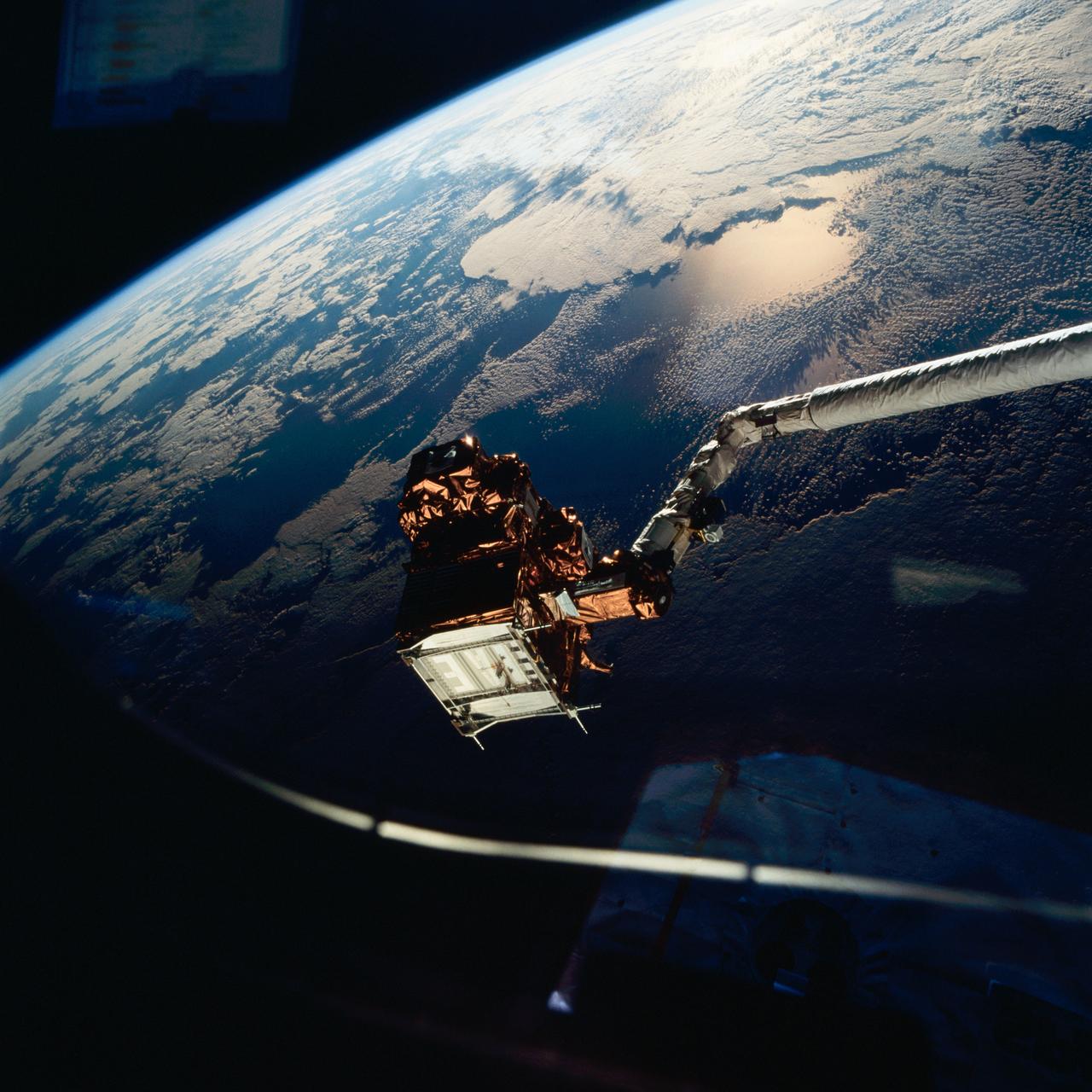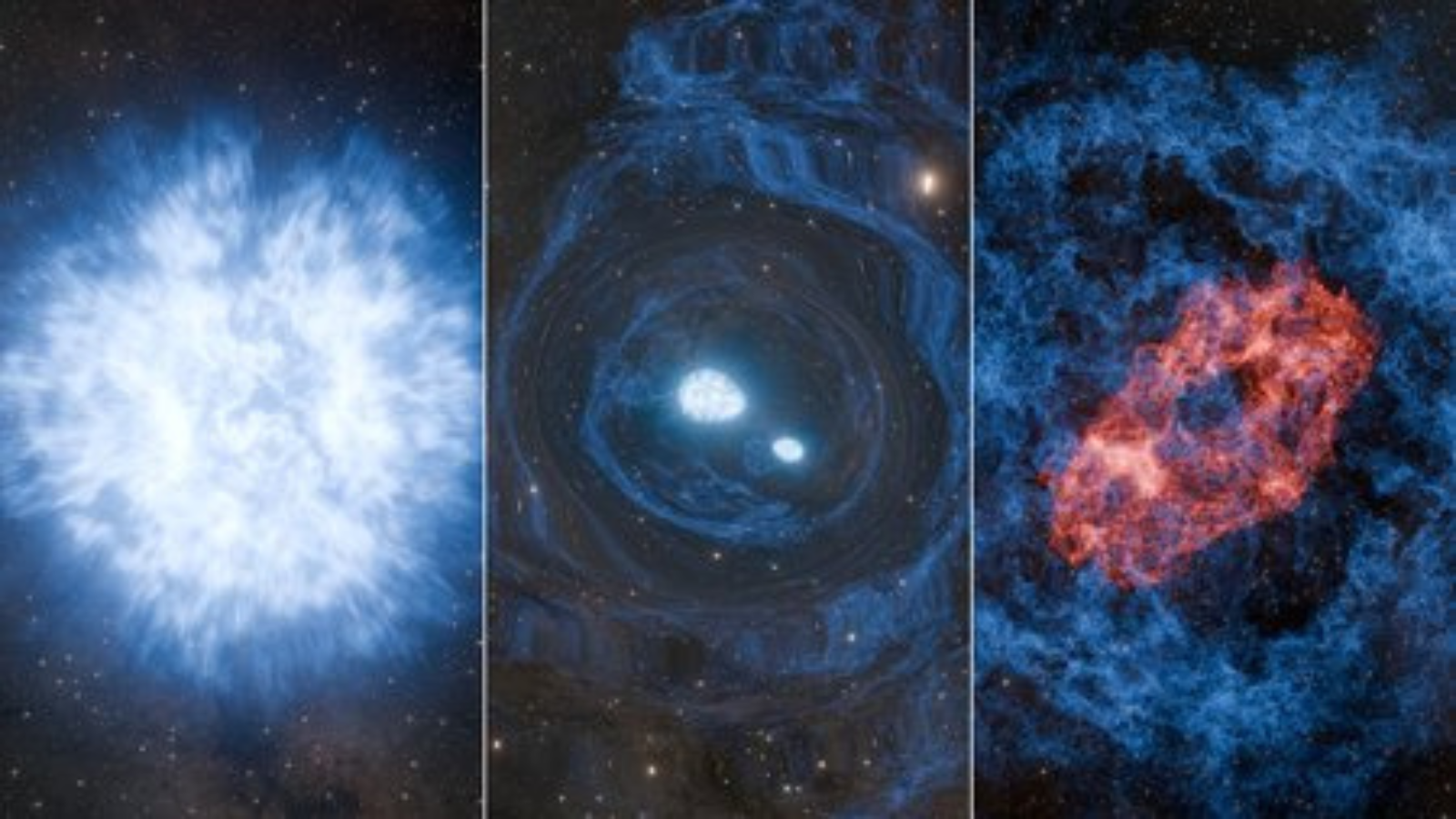Snatching a spinning spacecraft was 'the greatest pride' for 1st Canadian astronaut in space (video)
Marc Garneau flew three times in space and operated the famous Canadarm.
Canada's first astronaut in space can't believe how far the nation has come in 40 years.
Marc Garneau, who mostly flew with the Canadian Space Agency (CSA), embarked on the country's first space shuttle mission in October 1984. Garneau celebrates that journey in his new book, "A Most Extraordinary Ride" (Penguin Random House, 2024). Four decades after his pioneering flight, Garneau told Space.com how amazed he was that CSA astronaut Jeremy Hansen has been assigned to the Artemis 2 moon mission.
Garneau, first hired by Canada's National Research Council before CSA was formed in 1989, flew three times in space, on the shuttle missions STS-41G (in October 1984), STS-77 (May 1996) and STS-97 (November-December 2000). He later was a Canadian government minister — and even CSA president. But one of his most memorable spaceflight moments was wielding the Canadarm robotic arm, as Garneau shares in the interview below.
This interview was edited for length and clarity and focuses on the Canadian NRC and CSA astronauts; note that Canadians have flown to space with NASA and on private spaceflight missions as well.
Space.com: What I found interesting about your book was you had at least three distinct career phases through it. You had the beginning when you were focused on military, and then the second when you were in the space program, then the third, where you were mostly in politics. I was wondering if you could talk a bit about that journey as you were moving through these different phases?
Marc Garneau: I came out of the gate as a curious person, but really wanted to embrace life. I think I had a certain spirit of adventure and was, perhaps, risk-tolerant. In my teenage years, I didn't have the necessary judgment to go along with that curiosity and made some silly mistakes, and learned from those mistakes, and carried on.
Related: Canadarm2 was not designed to catch spacecraft at the ISS. Now it's about to grab its 50th
Breaking space news, the latest updates on rocket launches, skywatching events and more!
A Most Extraordinary Ride: Space, Politics, and the Pursuit of a Canadian Dream: $30.00 at Amazon
The first Canadian astronaut in space, Marc Garneau, shares the back story of his three space shuttle flights along with his entry into politics after his Canadian Space Agency career.
I left home when I was 16, because I wanted to get out there in the big world and join the Navy. I was very happy with that, because that was the kind of job I wanted. I didn't want to sit behind a desk. I wanted to be in a job that had several elements, including being out there on the high seas.
Accidentally, I saw an ad in the paper [for astronauts] back in 1983. I was 34 years old, and I couldn't resist that possibility of being out on the brand-new space frontier. I had some doubts about whether I'd be chosen. I was pretty sure there'd be more qualified people. I was thinking of the traditional model of the astronaut — you know, the test pilot. Anyway, I said, "If I don't apply, I'll never know, and I'll always kick myself." So I applied. I was very fortunate to be chosen as one of the first six Canadian astronauts.
That changed my life. That was not as much of a metamorphosis as perhaps going into politics later on, but it was a change. I was suddenly going from being a private individual to becoming a very public individual, because the interest in Canada and in our new astronauts was enormous. I did have to get used to the fact that I was a more public person. I was worried about too much intrusiveness, but I was fortunate that, generally, people were considerate about it.
When I made the transition to politics — I've often said this before — people liked me when I was an astronaut. But when I became a politician, it was a totally different ball of wax. They felt, and quite rightfully — Canadians who elect you feel entitled to tell you what they think. Sometimes they don't agree with you. Occasionally, rarely, it can get personal. So the big change there, although I was already a public figure, was the fact you have to grow a bit of a thick skin, because you're going to get criticized.
You know that goes with the territory, although I have to say that with social media today, it's — in some cases — gotten totally toxic. But I've got that thick skin. The secret there is not to grow that so thick that you become insensitive to everything else.
Related: What 8,000 hours flying military jets taught 2 Canadian astronauts
Space.com: I was fortunate enough last month to see some of your artifacts being processed for Ingenium, a coalition of Canadian museums. Can you talk about how that was done?
Garneau: It was [Canadian astronaut] Bob Thirsk who first suggested it to me. I thought this was a very good idea. It's a complex procedure. I called them up and said, 'Look, would you be interested in some artifacts?' A curator came to my house, and I laid everything out there, and they took only some of it. I was very glad to donate it, because it was stuff I was prepared to part with. There's a few things I won't part with, because I want to give them to my family, but they came and chose a few things, and that's the story there.
Space.com: We're speaking around the 40th anniversary of your first mission, STS-41G. And I saw on X [formerly Twitter] that you had a lot of memories. Is there maybe one or two things you really want to be highlighting for that mission?
Garneau: People always ask me that question: "What was the most memorable part of the mission?" And Bob Crippen, my commander on the first mission, used to quip: "The bit between the launch and the landing." It is all true, because every part of it is is a special experience. What stays with you your whole life is looking out the window and seeing planet Earth, because it's an experience that changes you. Perhaps not in a dramatic way, but in a subtle way. You become more conscious of the bigger issues and you begin to focus on those bigger issues once you've seen Earth from space. I think that only became stronger with my two other flights.
Space.com: You were one of the first foreign astronauts on the NASA space shuttle, and of course, the first Canadian on the shuttle. You talked a bit about this in the book, but that experience of having to be a representative right at the beginning of the program, when there's a lot of attention about you. How did you handle that?
Garneau: I did feel the pressure to perform, because I knew that Canada would be looking at at me, and so I really wanted everything to go well. I wanted, to put it bluntly, to make Canada proud. Secondly, I wanted to leave a good impression with NASA, because if I screwed up badly, it would leave NASA with questions about whether it was a good idea to use Canadians as astronauts. This, of course, would have affected my fellow colleagues who were also hoping for their turn to fly into space.
I was the second non-American. Ulf Merbold had flown the year before. He was from Germany. For some of the professional NASA astronauts that were down there, they had been training in some cases for years [without a spaceflight] — in one case, for 19 years. And here was the Canadian arriving at the last second, and was going to take up a seat in the space shuttle. So I felt a little bit of aloofness and perhaps coolness on the part of certain astronauts when I came down there.
We started to do our training. [It was] unlike today where you all integrate together in the same room and you get to know each other, and that's critical in terms of creating bonds. Bob Thirsk [my backup] and I were put in an office in a different building from the rest of the crew and we were sort of segregated, except for the times when we had to be there, to train together with the rest of the crew. So it's not something I spoke about at the time, but it is something that I had to live with.
Space.com: That's changed, though, as you say, right? It's better today than it used to be.
Garneau: Oh, absolutely, absolutely. Of course, these days there are no longer payload specialists [responsible for a small set of experiments], as was the case with me. I mean, over the years, there were many payload specialists, including some who were lost, like Christa McAuliffe [aboard space shuttle Challenger in 1986]. Today, I think there's the realization that we're all in this together. We're all taking the same risks, and we're all really focused on the success of the mission. We all have to work together. And I think that that culture is there now, within NASA.
Space.com: It was hard for me to pick a moment or two from your career to talk about, but one thing I did want to highlight was when you got to drive the Canadarm up there. Can you talk a little bit about how true the training was to the actual experience? Also, what your impressions were as you were able to undertake this activity?
Garneau: The training was first class, no question about it, in various different simulators at the NASA Johnson Space Center. Some of them physical, and some simulations where you were controlling the arm virtually and practicing the tasks that that you had to do. If I had to single out one moment that gave me the greatest pride in my three missions, it was the second mission, when I had to capture a free-flying spacecraft called Spartan 207. We had released it a couple of days before, and we had to now recover it and bring back to Earth.
It's different from capturing a payload that's in the payload bay, that's fixed. If you aren't successful, the payload you're trying to grab is not going to go anywhere. But if you make a mistake, trying to grab a free-flying satellite — and remember, you and the orbiter are both moving around the Earth in tandem at 28,000 kilometers per hour [17,400 mph] — if you do it wrongly, there's a potential for you to cause unwanted motion in your spacecraft. Then it's an extremely challenging task to be able to recover after that. I felt that was the moment when I really had to be successful, and it's the moment that worked out. It gave me a huge amount of pride being a Canadian, to operate that Canadarm and to capture a free-flying payload.
Space.com: Was there anything you wanted to highlight from the book or from your career about Canada's contributions in space?
Garneau: After my three flights, I became president of the CSA. I realized that one of the important roles that I had as president was to make Canadians aware of the fact that space has been a very powerful tool in helping to improve the lives of Canadians, whether it's communication satellites, GPS satellites, weather satellites. We've been pioneers with radar Earth observation and, of course, building robotic arms. We have used space in a way to improve our lives down here.
Space.com: Among your X posts, I also noticed that you've been with CSA astronaut Jeremy Hansen recently. He's also been waiting a long time, and he now is assigned to moon mission Artemis 2. Jenni Gibbons is going to be his backup. Can you talk a little bit about that evolution that Canada has had to get to this point?
Garneau: It's a quantum leap. I started it off as the first Canadian, trying to make a good impression. We had then after that CSA astronauts who flew and did outstanding things, three of them going up to the International Space Station, staying for for about six months each. One of them was commanding it, Chris Hadfield. Several of the Canadians were doing spacewalks and operating the Canadarm. I think that is tangible proof of the fact that Canadians, the astronauts, have proven themselves and are well respected in the international arena — and particularly with NASA.
I think the fact that Jeremy is going to be the first non-American to go as far as the moon and to orbit it, on Artemis 2, is really a testimony to the fact that not only is he viewed as an outstanding astronaut — which he is, and Jenni is [also as] his backup. It's also the fact that Canadians have come a long way since my first flight 40 years ago. So that gives me a very warm feeling of quiet satisfaction that we've come a long way.

Elizabeth Howell (she/her), Ph.D., was a staff writer in the spaceflight channel between 2022 and 2024 specializing in Canadian space news. She was contributing writer for Space.com for 10 years from 2012 to 2024. Elizabeth's reporting includes multiple exclusives with the White House, leading world coverage about a lost-and-found space tomato on the International Space Station, witnessing five human spaceflight launches on two continents, flying parabolic, working inside a spacesuit, and participating in a simulated Mars mission. Her latest book, "Why Am I Taller?" (ECW Press, 2022) is co-written with astronaut Dave Williams.
